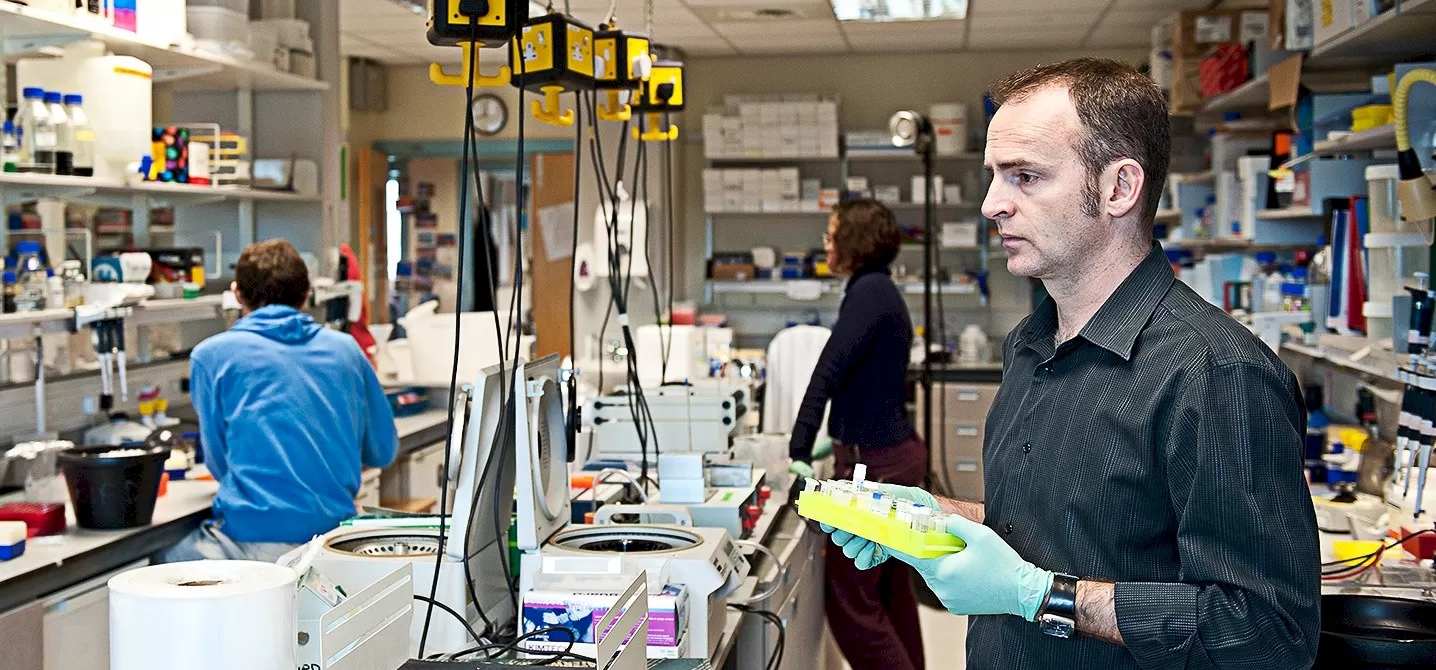The Growing Toolbox of Rett Mouse Models

Last month Adrian Bird and his lab members published a paper in the journal Human Molecular Genetics describing three new mouse models of Rett Syndrome, each of whom mimics a common human mutation. Together these three mutations represent 25% of all Rett cases.
Jim Selfridge and Kyla Brown from the Bird lab, joint first authors on the paper, recently discussed with RSRT’s executive director, Monica Coenraads, the highlights of the paper.
Selfridge/Brown
The paper describes mouse models of three of the most common Rett causing mutations in the MECP2 gene in humans: T158M, R306C and R133C. These mutations are generally associated with Rett syndrome of varying severity in people (in order of decreasing severity: T158M, R306C, R133C) and we have demonstrated that this is also the case in the mouse, where there are few other sources of genetic variation. This allowed us to investigate the biological basis of this difference in disease severity. We showed that both the T158M and R133C mutations cause Rett syndrome due to defective DNA binding and reduced levels of MeCP2 protein. Interestingly we found that the abundance of MeCP2 with the T158M mutation is reduced to a greater degree than in the case of R133C, which most likely explains the difference in phenotypic severity between these models. The R306C mutation, in all likelihood, causes Rett syndrome due to a lack of association with a protein complex that decreases gene expression and a slight reduction in DNA binding, but not because of reduced protein levels.
Coenraads: What are the models, both phenotypically and molecularly, teaching us about MeCP2 function?
Selfridge/Brown
These models help to highlight the key functions of MeCP2 as binding to DNA and association with another protein complex, called NCoR, that reduces expression of genes. They also show that the level of MeCP2 protein is crucial and may be a key determinant of disease severity. MeCP2 may have many other functions in the brain, but these seem essential in relation to Rett syndrome.

Coenraads: Why are mutation specific models better than knockouts?
Selfridge/Brown
A knockout model simply removes MeCP2 protein. This does not reflect the situation in girls with Rett syndrome where the mutant protein is still present. Knockout models have been important in Rett syndrome research, but haven’t explained exactly what MeCP2 does or why Rett syndrome is the result when it is mutated. The mutation specific models are more clinically relevant and allow us to pinpoint regions of the protein that are necessary for particular functions and gain insight into the reason why one girl with Rett syndrome caused by a particular mutation might have a less severe clinical picture than one with another mutation.
Coenraads: Please explain why the mice have GFP.
Selfridge/Brown
The MeCP2 protein carried a fluorescent tag so that, in the lab, we can visualize its localization in the nucleus and measure binding to DNA more easily.
Coenraads: Please explain the significance of the hmc and what the 133 model teaches us and why is it important.
Selfridge/Brown
It was previously suggested that the R133C mutation in MeCP2 results in a specific loss of protein binding to DNA that is hydroxymethylated. This type of DNA modification has been associated with active genes. We now know that MeCP2 does not bind to the most abundant form of hydroxymethylated DNA in the brain and our paper shows that MeCP2 with the R133C mutation does not bind normally to other forms of modified DNA (methylated, associated with inactive genes), so there is no specific loss of binding to hydroxymethylated DNA.
Some info on who Kyla and Jim are:
Kyla Brown
I am a doctor, specializing in Child and Adolescent Psychiatry. I am interested in neurodevelopmental disorders like Rett syndrome. I came to the Bird lab as part of a Wellcome Trust funded clinical PhD fellowship organized by the University of Edinburgh’s Clinical Academic Training Scheme that lasted for three years.
Jim Selfridge
I have worked in The University of Edinburgh for over 25 years, during which time much of my career has focused on generating mouse models of human disorders. It was this expertise that brought me to the Bird lab where I have spent more than 12 years generating and studying mouse models of Rett.


